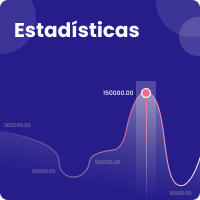Public Debt and Economic Growth in Colombia: An Approach to Overlapping Generations
Abstract
With a selective reference is pointed out how the domestic and external public debt affects
the saving decisions and the financial markets through the optimum tax policy. After that the
behaviour of the domestic and external public debt and also the external private debt is studied
through the data. The roll of the Colombian pension fond to finance the public deficit is explained.
An overlapping generation model is constructed with the most important Colombian stylized
facts. The theoretical model is calibrated for 12 generations, 12 periods each one of 5 years.
The labour life of the individuals is ten periods and the pension periods are two. The behaviour
of the household economies and productive sector are studied with respect to the previous
assumptions. The labour productivity, both by experience and between generations, is
estimated in order to calibrate the model. The public and private debt and economic growth
simulations are conducted with the Colombian parameters in 2005. The simulations are realized
changing: i) the total factor productivity; ii) external interest rate; and iii) the public expenditure.
Downloads
Languages:
esReferences
Auerbach, Alan and Lawrence Kotlikoff (1987), Dynamic fiscal policy, Cambridge University Press.
Blanchard, Oliver (1989), Debt, deficits, and finite horizonts, The Journal of Political Economy, 93, 2, 223-247.
Calvo, Guillermo (1998), Growth, Debt and Economic Transformation: The Capital Flight Problem, in Coricelli, di Metteo and Hahn (ed.), New Theories in Growth and Development, St. Martin´s Press, Inc. C
Croix, David de la and Phillippe Michel (2002), A theory of economic growth: Dynamics and policy in overlapping generations, Cambridge University Press.
Diamond, Peter. (1965), National debt in a neoclassical model, American Economic Review, December, 1226-50.
Ganelli, Giovanni (2005), The new open economy macroeconomics of government debt, in Journal of International Economics, 65, 1, 167 - 184.
GRECO (2002), El Crecimiento Económico Colombiano en el Siglo XX, Banco de la República, Fondo de Cultura Económica, Bogotá, 81-126.
Hviding, Ketill and Marcel Mérette (1998), Macroeconomic effects of pension reforms in the context of agein populations: overlaping generations model simulations for seven OECD countries, OECD, ECO/ WKP 98, 14.
Heer, Burkhard and Alfred Maussner (2005), Dynamic General Equilibrium Modelling: Computational methods and applications Springer.
Obtsfeld, Maurice and Kenneth Rogoff (1995), Foundations of international macroeconomics, MIT. Press.
Rubio, Orlando; Jair Ojeda y Enrique Montes (2004), Deuda externa, inversión y crecimiento en Colombia, 1970-2002, Revista del Banco de la República, 916, 22-63.
Schclarek, Alfredo (2004), Debt and Economic Growth in Developing and Industrial Countries, Working Paper.
Zee, Howell H. (1987), Government Debt, Capital Accumulation and the Terms of Trade in a Model of Interdependent Economies, Economic Inquiry, October, XXV, 519-618. DEUDA PÚBLICA












